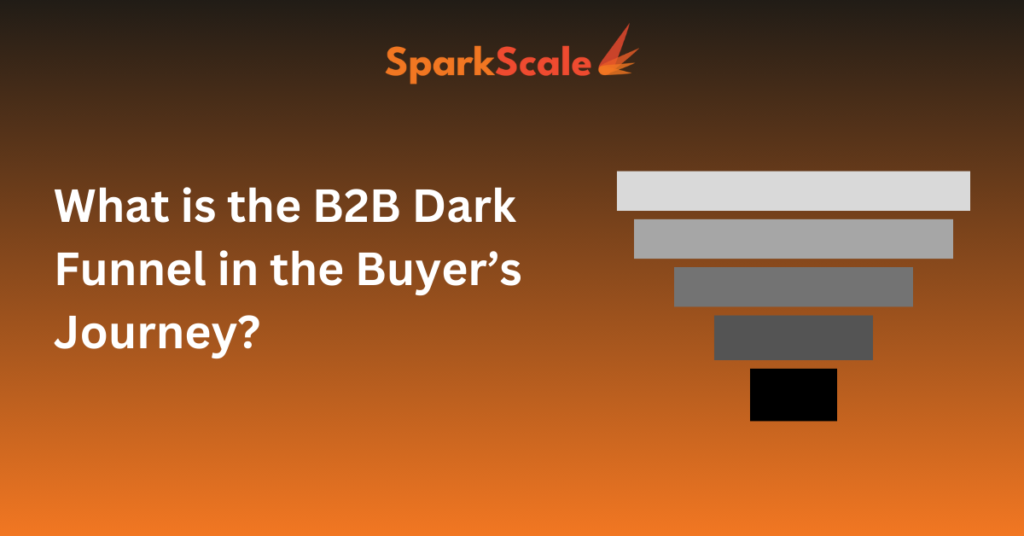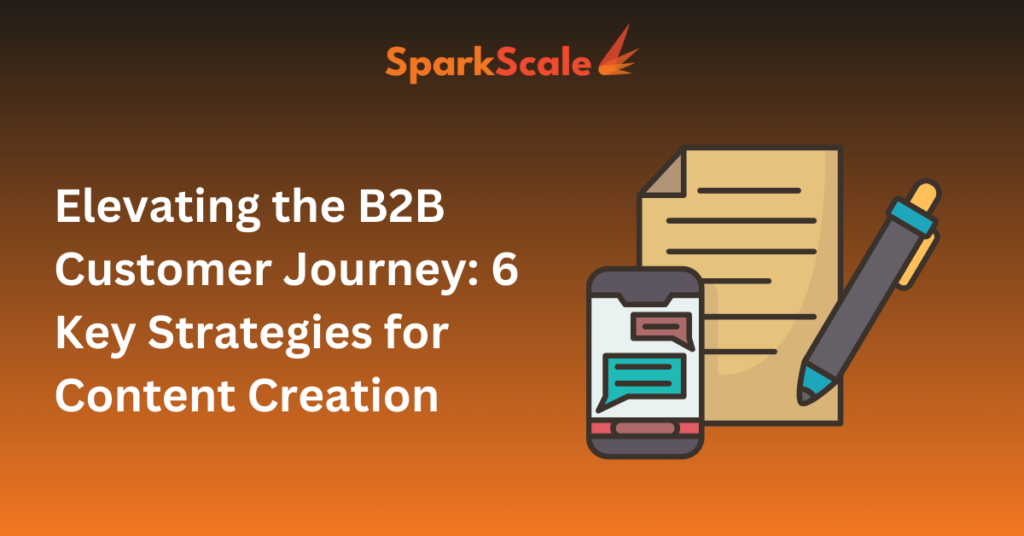What is the B2B Dark Funnel in Marketing in the Buyer’s Journey?
What is the Dark Funnel in Marketing?
In B2B marketing, understanding the concept of the “dark funnel” is crucial for developing effective strategies. The dark funnel refers to the part of the buyer’s journey that occurs outside of a company’s direct marketing channels. This means that potential buyers engage in research, information gathering, and evaluation stages without directly interacting with a company’s visible digital trail. The dark funnel includes various interactions, such as organic search, anonymous website visitors, third-party review sites, offline interactions, private social media groups, email and direct messages, and content consumption.
Examples of Interactions
Organic Search:
When potential buyers use search engines to research products or solutions, they often explore multiple websites and consume various content pieces before making contact with a specific company. These interactions occur in the dark funnel, as the company may not be aware of the specific searches or visits until the potential buyer takes a visible action, such as filling out a form or making an inquiry.
Anonymous Website Visitors:
Many B2B websites track visitor behavior using tools like Google Analytics. However, not all visitors will provide their information or convert into leads during their first visit. These anonymous website visitors navigate through different pages, consume content, and make evaluations without leaving identifiable information. Their actions and interests remain hidden until they choose to engage further.
Third-Party Review Sites:
B2B buyers often consult third-party review sites, industry forums, or social media platforms to gather insights and recommendations about specific products, services, or vendors. These interactions occur outside a company’s direct marketing channels, making it difficult to track or attribute these touchpoints to specific buyers or marketing efforts.
Offline Interactions:
In B2B marketing, offline interactions such as word-of-mouth recommendations, industry events, conferences, or networking meetings play a crucial role. Potential buyers may gather information, exchange opinions, and conduct research during these offline interactions, which remain untraceable digitally.
Private Social Media Groups:
Many industry professionals participate in private social media groups or forums where they discuss challenges, seek advice, and share experiences. These closed communities can influence purchasing decisions, but companies may not have visibility into these interactions unless they actively participate or monitor these groups.
Email and Direct Messages:
Potential buyers may reach out to industry experts, colleagues, or peers via email or direct messages to seek recommendations, information, or opinions. These one-on-one interactions occur in the dark funnel as they are not directly visible to the company or its marketing channels.
Content Consumption:
Prospects may consume a variety of content pieces, such as whitepapers, case studies, or industry reports, without leaving any identifiable information or taking visible action. They gather insights, compare solutions, and evaluate options in the dark funnel before considering engaging with a specific company.
Importance of Understanding the Dark Funnel
Understanding and addressing the dark funnel is crucial for B2B marketers to develop strategies that provide value, establish thought leadership, and attract potential customers during these hidden stages of the buyer journey. By recognizing the significance of these hidden interactions, marketers can tailor their content, messaging, and outreach efforts to resonate with potential buyers who are in the research and evaluation phases.
Strategies for Navigating the Dark Funnel
To navigate the dark funnel effectively, B2B marketers can implement these 5 strategies:
1. Content Optimization:
Creating high-quality, informative content that addresses the needs and pain points of potential buyers can attract them during their research phase. This content should be optimized for relevant keywords to improve organic search visibility.
2. Tracking Tools:
Utilizing tracking tools like Google Analytics and marketing automation platforms can provide insights into anonymous website visitors and their behavior. Marketers can use this data to identify patterns and adjust their strategies accordingly.
3. Engagement in Online Communities:
Actively participating in relevant online communities and forums can provide valuable insights into the discussions and topics that interest potential buyers. Marketers can use this information to tailor their messaging and content to resonate with these audiences.
4. Influencer Partnerships:
Collaborating with industry influencers who have a strong presence in private social media groups or forums can help reach potential buyers who are part of these communities. Influencers can endorse products or services, increasing brand visibility in the dark funnel.
5. Personalized Outreach:
Sending personalized outreach messages via email or direct messages can help establish a connection with potential buyers who are in the dark funnel. These messages should be tailored to the recipient’s interests and needs, offering relevant information or solutions.
Conclusion
In conclusion, the dark funnel represents a significant part of the B2B buyer’s journey that occurs outside of a company’s direct marketing channels. Understanding and addressing the dark funnel is essential for B2B marketers to develop effective strategies that resonate with potential buyers during their research and evaluation stages. By implementing strategies to navigate the dark funnel, marketers can improve their visibility and engagement with potential customers, ultimately driving conversions and sales in the B2B space.



